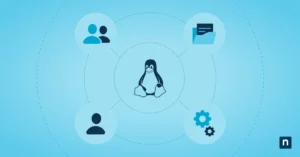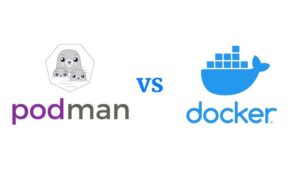Nowadays, many will remember the old MS-DOS as PD-DOS was really called being left aside by Microsoft and embraced by the world of free software, but the question arises, what is FreeDOS?
FreeDOS (formerly Free-DOS and PD-DOS) is a free operating system for IBM PC compatible computers. It aims to provide a complete DOS-compliant environment for running legacy software and embedded systems support, Wikipedia Source.
FreeDOS does exactly the same, and only requires a computer with only 640 Kbytes of free memory to function. It can run virtually every MS-DOS compliant application written in its day. But it also has differences with the system on which it is based, such as the support for FLAT32 partitions or LBA hard drives of up to 128 GB or even 2 TB depending on whether the BIOS supports it.
Today this may seem quite obsolete, but if Microsoft and practically all GNU / Linux systems maintain these command consoles, it is because sometimes it is much faster to do things in these environments than by clicking and searching in an environment graphic.
This may be a fairly archaic operating system, but it can still be implemented on different platforms that do not require great performance for information management, it can be used in low-resource hardware elements for specific tasks or even in the electronic brains of smart appliances. There are many ways this can still be used.
Therefore, since it is free software, manufacturers usually use it for different hardware solutions today, although not as advanced as computer solutions with GNU / Linux Distributions or other operating systems, but it is a good option when it comes to producing cheap computers for specific functions.
History
Physicist Jim Hall, a graduate of the University of Wisconsin-River Falls, had an Apple II clone in his youth that served as an electronic game field and then moved on to the programming stage by learning the Applesoft BASIC language on his own. As time passed, the team’s replacement was an IBM PC which also had a version of BASIC, to which he migrated his programs without major problem during his studies at high school. During his undergraduate degree at university, he learned the C language and programmed under the MS-DOS environment. Although they used UNIX in that house of study, Jim Hall used MS-DOS on his personal computers for his academic work. In 1993, he discovers that GNU / Linux is compatible with his computers and installed it in double boot, he recognizes the potential of the new operating system, however given the large number of utility programs -and games- he decides to stay with MS- TWO. In 1994, after having tried Windows 3.1, and before the press announcements that they would only go to graphical environment and the Microsoft company would abandon the development and support of future versions of MS-DOS, Jim Hall decided to publish the announcement of his project on the 29th June on the website comp.os.msdos Apps. Confused with the concepts of free software and public domain, he decides to name it PD-DOS (Public Domain-Disk Operating System by its initials in English) and it is until the end of July that it is relaunched under the name of Free-DOS and under license general public (GNU). Finally, they eliminated the script, and it was left with the current name FreeDOS.
Differences with MS-DOS
- FreeDOS includes some features that were not present in MS-DOS:
- Ultra-DMA controller and Large Disk Support (LBA).
- Supports the FAT32 file system.
- DOSLFN driver to use VFAT long file names.
- Free license (GPL).
- User-defined internationalization support.
Why is it still being used?
According to the official website of the project, FreeDOS is used mainly in three areas. The first is to play old MS-DOS games, but also to run software that does not work well in current versions of Windows and to develop embedded operating systems in small devices without much hardware.
However, there are also manufacturers that currently sell computers with FreeDOS, especially laptops, and on pages like Amazon you can still find many models for sale. This is so because, when you buy a laptop “without operating system”, the most normal thing is that what you have is a FreeDOS that serves as a basic system.
With this, they make sure that when you turn on the laptop you can do some basic functions, and then that you have no problems when you want to use a USB to install Windows, GNU / Linux or the operating system of your choice.
In many cases, computers that are sold with FreeDOS are cheaper than those that are available with Windows pre-installed. This is because the manufacturer is saving licenses by selling it to you without Windows. Therefore, if you already have your own purchased license, it can be an interesting option to save you money.
Who needs FreeDOS in 2021?
It is likely that you have outlined a half smile while reading these lines. In a world of incredible graphical interfaces, real multitasking or cloud computing, who wants to go back to the old commands of an operating system from the 90s? Well, based on the data, it seems that quite a few people find FreeDOS very useful, exceeding 30,000 downloads in the last 4 years.

James Hall himself acknowledges on the project’s official website that FreeDOS is used mainly in three scenarios:
- To run classic MS-DOS games.
- To run legacy software that does not work well on newer versions of Windows.
- For the development of embedded systems, such as that governing small devices with large hardware limitations.

As we have already mentioned, FreeDOS is also the option chosen by some manufacturers to sell equipment with a free operating system that does not require configuration. Aware that most users will end up installing another one, FreeDOS is an option that does not need drivers or configuration (as it does with Windows or GNU / Linux) and installs in seconds. In this way, they reduce the final price and avoid delivering a PC that cannot even boot properly.
FreeDOS is today a free and collaborative project, in continuous development, and that will go as far as the user community needs. It’s not easy at all surviving 25 years (tell OS/2), so Jim Hall and everyone who has made it possible has a lot to celebrate.










